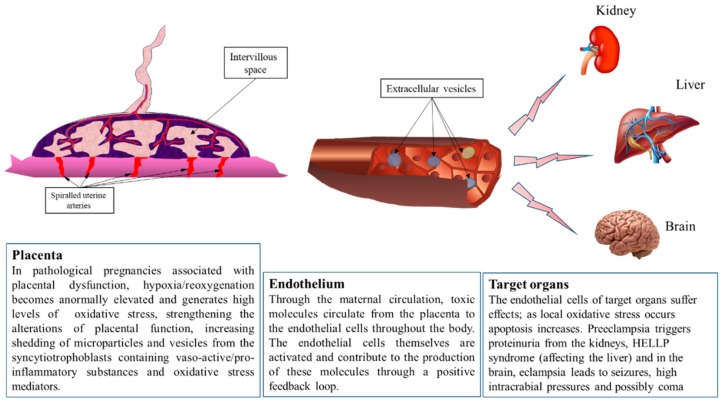Figure 2.
The placenta is the interface between mother and fetus. The placenta plays an indispensable and multifunctional role as the interface between the two adjoined organisms, regulating immunological dialogue and tolerance, nutrient and gas exchange, and producing hormones essential for pregnancy. The first trimester of gestation in humans is characterized by general hypoxia in the intervillous space, as many maternal spiral arteries are plugged with extravillous trophoblast cells, preventing maternal red blood cells from passing into this space. After 12–14 weeks of normal gestation, these placental extravillous trophoblasts colonize the maternal spiraled arteries as far as the proximal third of the myometrium. This innervation leads to the arteries to relax and lose contractile properties, which increases blood flow and raises oxygen partial pressure, thus reversing the previously hypoxic environment. Therefore, oxidative stress normally occurs in the healthy placenta and may in fact be important for its organogenesis. However, in cases of incomplete placentation, this stress occurs at an excessive level and leads to an elevated release of placental debris and vesicles into the maternal circulation. These extracellular vesicles carry active molecules (proteins of microRNA) generated by stressed placental cells. Once in the blood, they meet maternal endothelial cells and potentially transfer their contents, leading to transcriptome alterations and inflammation. Eventually, the endothelium of maternal organs is affected. In the case of preeclampsia, this most heavily occurs in the kidney, liver, and brain.

